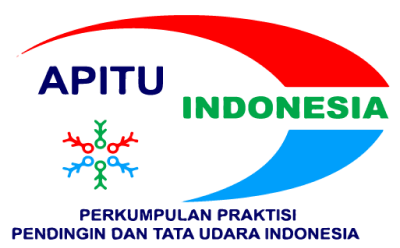DETEKSI EMOSI PADA TEKS BERBAHASA INDONESIA MENGGUNAKAN PENDEKATAN ENSEMBLE
Abstract
Full Text:
PDFReferences
Ahmad, A., Saraswat, D., Aggarwal, V., Etienne, A., & Hancock, B. (2021). Performance of deep learning models for classifying and detecting common weeds in corn and soybean production systems. Computers and Electronics in Agriculture, 184. https://doi.org/10.1016/j.compag.2021.106081
Artama, M., Sukajaya, I. N., & Indrawan, G. (2020). Classification of official letters using TF-IDF method. Journal of Physics: Conference Series, 1516(1). https://doi.org/10.1088/1742-6596/1516/1/012001
Aslam, Z., Javaid, N., Ahmad, A., Ahmed, A., & Gulfam, S. M. (2020). A combined deep learning and ensemble learning methodology to avoid electricity theft in smart grids. Energies, 13(21). https://doi.org/10.3390/en13215599
Chatterjee, A., Gupta, U., Chinnakotla, M. K., Srikanth, R., Galley, M., & Agrawal, P. (2019). Understanding Emotions in Text Using Deep Learning and Big Data. Computers in Human Behavior, 93, 309–317. https://doi.org/10.1016/j.chb.2018.12.029
Chen, R. C., Dewi, C., Huang, S. W., & Caraka, R. E. (2020). Selecting critical features for data classification based on machine learning methods. Journal of Big Data, 7(1). https://doi.org/10.1186/s40537-020-00327-4
Chowanda, A., Sutoyo, R., Meiliana, & Tanachutiwat, S. (2021). Exploring Text-based Emotions Recognition Machine Learning Techniques on Social Media Conversation. Procedia Computer Science, 179, 821–828. https://doi.org/10.1016/j.procs.2021.01.099
Cunningham-Nelson, S., Baktashmotlagh, M., & Boles, W. (2019). Visualizing Student Opinion through Text Analysis. IEEE Transactions on Education, 62(4), 305–311. https://doi.org/10.1109/TE.2019.2924385
George, N., Khan, M., Velu, A., & Whig, P. (2021). Framework of Perceptive Artificial Intelligence using Natural Language Processing (P.A.I.N). https://acors.org/ijacoi/VOL2_ISSUE2_3.pdf
George, S., & Srividhya, V. (2022). Performance Evaluation of Sentiment Analysis on Balanced and Imbalanced Dataset Using Ensemble Approach. Indian Journal of Science and Technology, 15(17), 790–797. https://doi.org/10.17485/IJST/v15i17.2339
Hasan, M., Milon Islam, M., Ishrak Islam Zarif, M., & Hashem, M. (2019). Attack and anomaly detection in IoT sensors in IoT sites using machine learning approaches. https://doi.org/10.1016/j.iot.2019.10
Hu, J., Wang, J., Lin, J., Liu, T., Zhong, Y., Liu, J., Zheng, Y., Gao, Y., He, J., & Shang, X. (2019). MD-SVM: A novel SVM-based algorithm for the motif discovery of transcription factor binding sites. BMC Bioinformatics, 20. https://doi.org/10.1186/s12859-019-2735-3
Ibrahim, I., & Abdulazeez, A. (2021). The Role of Machine Learning Algorithms for Diagnosing Diseases. Journal of Applied Science and Technology Trends, 2(01), 10–19. https://doi.org/10.38094/jastt20179
Kiangala, S. K., & Wang, Z. (2021). An effective adaptive customization framework for small manufacturing plants using extreme gradient boosting-XGBoost and random forest ensemble learning algorithms in an Industry 4.0 environment. Machine Learning with Applications, 4, 100024. https://doi.org/10.1016/j.mlwa.2021.100024
Kumar, P., & Raman, B. (2022). A BERT based dual-channel explainable text emotion recognition system. Neural Networks, 150, 392–407. https://doi.org/10.1016/j.neunet.2022.03.017
Lan, F. (2022). Research on Text Similarity Measurement Hybrid Algorithm with Term Semantic Information and TF-IDF Method. Advances in Multimedia, 2022. https://doi.org/10.1155/2022/7923262
Le Glaz, A., Haralambous, Y., Kim-Dufor, D. H., Lenca, P., Billot, R., Ryan, T. C., Marsh, J., DeVylder, J., Walter, M., Berrouiguet, S., & Lemey, C. (2021). Machine learning and natural language processing in mental health: Systematic review. In Journal of Medical Internet Research (Vol. 23, Issue 5). JMIR Publications Inc. https://doi.org/10.2196/15708
Ma, H., Wang, J., Qian, L., & Lin, H. (2021). HAN-ReGRU: hierarchical attention network with residual gated recurrent unit for emotion recognition in conversation. Neural Computing and Applications, 33(7), 2685–2703. https://doi.org/10.1007/s00521-020-05063-7
Mielke, S. J., Alyafeai, Z., Salesky, E., Raffel, C., Dey, M., Gallé, M., Raja, A., Si, C., Lee, W. Y., Sagot, B., & Tan, S. (2021). Between words and characters: A Brief History of Open-Vocabulary Modeling and Tokenization in NLP. http://arxiv.org/abs/2112.10508
Nandwani, P., & Verma, R. (2021). A review on sentiment analysis and emotion detection from text. In Social Network Analysis and Mining (Vol. 11, Issue 1). Springer. https://doi.org/10.1007/s13278-021-00776-6
Nimmi, K., Janet, B., Selvan, A. K., & Sivakumaran, N. (2022). Pre-trained ensemble model for identification of emotion during COVID-19 based on emergency response support system dataset. Applied Soft Computing, 122. https://doi.org/10.1016/j.asoc.2022.108842
Pane, S. F., Ramdan, J., Putrada, A. G., Fauzan, M. N., Awangga, R. M., & Alamsyah, N. (2023). A Hybrid CNN-LSTM Model With Word-Emoji Embedding For Improving The Twitter Sentiment Analysis on Indonesia’s PPKM Policy. 51–56. https://doi.org/10.1109/icitisee57756.2022.10057720
Parvin, T., & Hoque, M. M. (2021). An Ensemble Technique to Classify Multi-Class Textual Emotion. Procedia Computer Science, 193, 72–81. https://doi.org/10.1016/j.procs.2021.10.008
Pei, Z., Sun, Z., & Xu, Y. (2019). Slang detection and identification.
Plaza-del-Arco, F. M., Martín-Valdivia, M. T., Ureña-López, L. A., & Mitkov, R. (2020). Improved emotion recognition in Spanish social media through incorporation of lexical knowledge. Future Generation Computer Systems, 110, 1000–1008. https://doi.org/10.1016/j.future.2019.09.034
Radzi, S. F. M., Karim, M. K. A., Saripan, M. I., Rahman, M. A. A., Isa, I. N. C., & Ibahim, M. J. (2021). Hyperparameter tuning and pipeline optimization via grid search method and tree-based autoML in breast cancer prediction. Journal of Personalized Medicine, 11(10). https://doi.org/10.3390/jpm11100978
Ranganathan, J., & Tzacheva, A. (2019). Emotion mining in social media data. Procedia Computer Science, 159, 58–66. https://doi.org/10.1016/j.procs.2019.09.160
Riccosan, Saputra, K. E., Pratama, G. D., & Chowanda, A. (2022). Emotion dataset from Indonesian public opinion. Data in Brief, 43. https://doi.org/10.1016/j.dib.2022.108465
Rizwan, A., Iqbal, N., Ahmad, R., & Kim, D. H. (2021). Wr-svm model based on the margin radius approach for solving the minimum enclosing ball problem in support vector machine classification. Applied Sciences (Switzerland), 11(10). https://doi.org/10.3390/app11104657
Romano, J. D., Le, T. T., Fu, W., & Moore, J. H. (2021). TPOT-NN: augmenting tree-based automated machine learning with neural network estimators. Genetic Programming and Evolvable Machines, 22(2), 207–227. https://doi.org/10.1007/s10710-021-09401-z
S, S. B., Khyani, D., M, N. N., & M, D. B. (2021). An Interpretation of Lemmatization and Stemming in Natural Language Processing. https://www.researchgate.net/publication/348306833
Slavova, V., & Andonov, F. (2022). Bad news or good news when recognizing emotional valence using phonemic content. 2022 21st International Symposium INFOTEH-JAHORINA, INFOTEH 2022 - Proceedings. https://doi.org/10.1109/INFOTEH53737.2022.9751339
Sorin, V., Barash, Y., Konen, E., & Klang, E. (2020). Deep Learning for Natural Language Processing in Radiology—Fundamentals and a Systematic Review. Journal of the American College of Radiology, 17(5), 639–648. https://doi.org/10.1016/j.jacr.2019.12.026
Sultana, R., & Nishino, T. (2023). EPiC Series in Computing Fake News Detection System: An implementation of BERT and Boosting Algorithm (Vol. 91).
Xu, T., Ma, Y., & Kim, K. (2021). Telecom churn prediction system based on ensemble learning using feature grouping. Applied Sciences (Switzerland), 11(11). https://doi.org/10.3390/app11114742
Yu, H., Ji, N., Ren, Y., & Yang, C. (2019). A special event-based K-nearest neighbor model for short-term traffic state prediction. IEEE Access, 7, 81717–81729. https://doi.org/10.1109/ACCESS.2019.2923663
Zadgaonkar, A. V., & Agrawal, A. J. (2021). An overview of information extraction techniques for legal document analysis and processing. International Journal of Electrical and Computer Engineering, 11(6), 5450–5457. https://doi.org/10.11591/ijece.v11i6.pp5450-5457
DOI: https://doi.org/10.31884/jtt.v10i2.551
Refbacks
- There are currently no refbacks.
Copyright (c) 2024 JTT (Jurnal Teknologi Terapan)
 Creative Common Attribution-ShareAlike 4.0 International (CC BY-SA 4.0)
Creative Common Attribution-ShareAlike 4.0 International (CC BY-SA 4.0)














